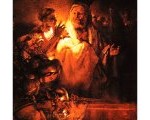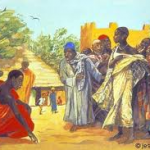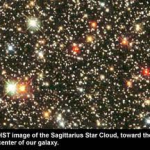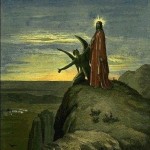Palm/Passion Sunday – Cycle C
Reflecting on Luke 22:14-23:56
Come with me for a moment. I want to show you something. Stand here with me in the courtyard of Caiaphas, the high priest. The temple guards have just arrested Jesus. Did you hear all that commotion when they marched him up from the Mount of Olives? Now they’ve got him in the house. See that man over there, the one with the thick accent? He was one of the followers of Jesus. But he keeps denying it. Let’s ask him for a third time: Surely you were with him, for you too are a Galilean, right? No, he says, I don’t know what you’re talking about.
Can you hear it? The rooster crowing? And now look! There is Jesus, looking out the window, staring at his friend. What is that message that passes between them? Jesus has pure love in his eyes. But his friend’s eyes are starting to turn red, and he runs far away from the fire, far away from Jesus, weeping so loudly we can still hear him.
Listen. The sound of his crying melts into the sounds of Jesus’ prayers―is that Psalm 88?― as he stands chained in the dungeon in the caves just beneath us.
Two thousand years later, millions of believers still come to this place. Roosters still crow in the courtyard. Pilgrims still climb down, down into the pit where Jesus was chained the night before he died. And the sound of Peter’s weeping meets our own.
Why does the Church remember Peter as her first leader after his terrible betrayal?
What would YOU like to say about this question, or today’s readings, or any of the columns from the past year? The sacred conversations are setting a Pentecost fire! Register here today and join the conversation.
I have come to light a fire on the earth; how I wish it were already burning (Lk.12:49).






